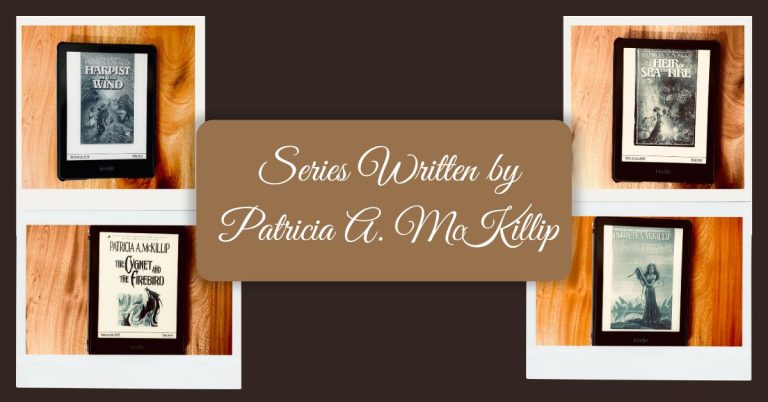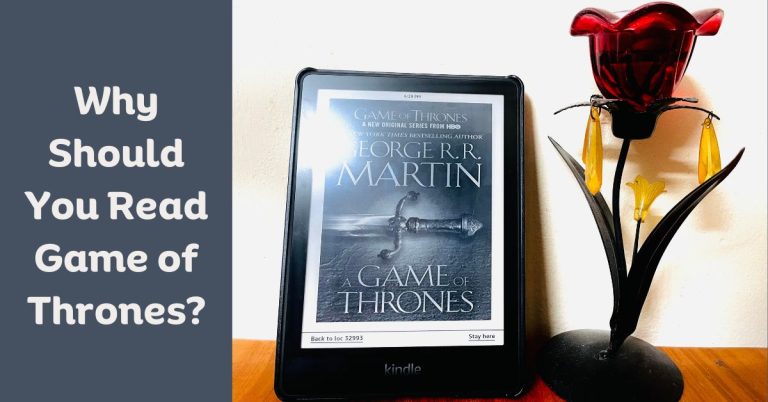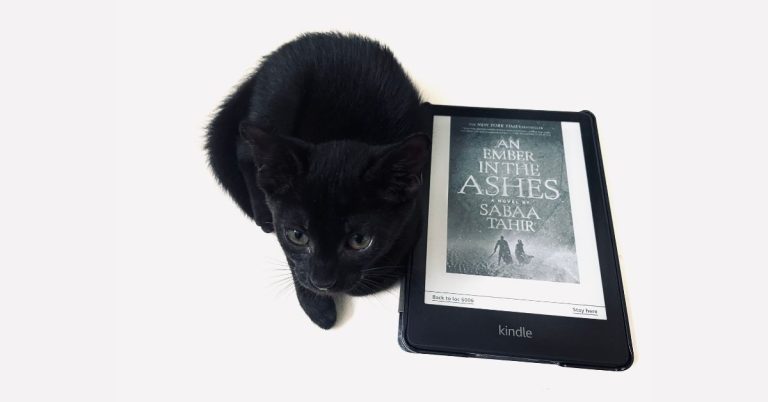23 High Fantasy Tropes You Should Know (As a Reader or Writer)
Today I am going to talk about the coolest tropes of high fantasy that I’ve enjoyed throughout my journey as a reader.
What is a trope you ask?
A trope is a common or overused theme or device in literature. It can refer to a stereotype, cliché, or a commonly used plot point or character type. They provide familiar patterns that help readers or viewers quickly understand new stories. Tropes are not necessarily bad; in fact, they can often add to the enjoyment of work if used creatively.
Today, I want to share with you the 23 high fantasy tropes I like the most. This isn’t just some random list, folks. It’s a carefully crafted collection of my all-time favorite ingredients that make a high fantasy story truly magical.
These are the tropes that make my heart race, my mind wanders, and my spirit soars on the wings of imagination. Whether you are a reader or a writer of fantasy, knowing these high fantasy tropes will allow you to understand a fantasy story better or help you to craft one.
So, if you are ready, let’s dig into this treasure chest of fantasy gold and explore the tantalizing tropes that keep us turning pages long past bedtime, thirsty for just one more chapter of the adventure.
23 coolest high fantasy tropes you need to know as a reader or writer:
1. The chosen one
Picture a humble character, seemingly ordinary, yet carrying a destiny heavier than mountains – that’s the essence of The Chosen One trope. In high fantasy, this character is predestined by prophecy or lineage to induce a significant change or fulfill an extraordinary destiny. I still remember the first time I encountered this trope – while reading The Lord of the Rings.
Frodo Baggins, a humble hobbit, was thrust into the role of the Ringbearer, chosen to carry the One Ring to the fires of Mount Doom. His struggles, triumphs, and internal transformation became the lifeblood of the story. This trope carries a beautiful message of growth and the potential for greatness within the ordinary.

2. Quests and adventures
Ah, quests – they ignite the spark of adventure within us, don’t they? They are the cornerstone of high fantasy, embodying the journey of heroes venturing into unknown territories, facing myriad dangers, and seeking a grand objective. I recall being gripped by the quest in The Hobbit.
Bilbo’s unexpected journey with a band of dwarves to reclaim their homeland from the dragon, Smaug, took me through treacherous landscapes and breathtaking vistas. It was more than a mere plot device. It was a testament to camaraderie, perseverance, and the allure of the unknown.
3. Magical artifacts
Magical artifacts are those gleaming gems in a fantasy narrative that capture our imagination. These are special objects with unique powers or significant roles in the story. One that still makes my heart race is the One Ring from Tolkien’s Middle Earth. Its insidious influence, its power to corrupt, and its role as the linchpin in the War of the Ring made it more than just an object. It became a character in its own right, teaching me that power unchecked could lead to one’s downfall.
4. Medieval settings
The grand castles, the vast, untamed forests, the sprawling kingdoms – a well-crafted medieval setting in a high fantasy story can make us yearn for a time long past. It’s like stepping into a historical era but with a generous sprinkling of magic and myth.
In George R.R. Martin’s A Song of Ice and Fire, the medieval-inspired Westeros, with its political intrigue, ancient lineages, and lore, made the fantasy world richly tangible. The setting served as a fertile backdrop where heroes, villains, dragons, and magic could co-exist, and readers like us could lose themselves.
5. Hero’s journey
The Hero’s Journey is a trope that tugs at the heartstrings. This is not just about a character’s physical journey but their internal transformation. From a naive innocent to a seasoned warrior, the hero grows, learns, and changes.
I was particularly moved by Kvothe’s journey in Patrick Rothfuss’ The Name of the Wind. Orphaned and destitute, Kvothe navigates a world of magic and menace, evolving with every challenge. His journey mirrors our own in life – a constant struggle, a constant evolution.
6. Wise old mentor
The wise old mentor is a staple of high fantasy, a beacon of knowledge and wisdom guiding our heroes through their journey. This figure often has a profound impact on the protagonist, shaping their values and skills. I can’t help but think of Gandalf from The Lord of the Rings.
Whether leading the Fellowship, combating the Balrog, or advising kings, his wisdom and power were invaluable. Gandalf’s departure from the Mines of Moria deeply moved me, proving how pivotal his role was. Mentors like him remind us that every hero, no matter how great, once needed guidance and support.
7. Hidden lineage
There’s something enchanting about the hidden lineage trope. A character suddenly discovers their royal or significant ancestry, and their life is irrevocably altered. It’s like finding out you’ve been wearing an invisibility cloak all along.
A fitting example is Jon Snow from George R.R. Martin’s A Song of Ice and Fire, who learns of his true parentage and royal bloodline. Jon’s revelation does more than just shock-it reshapes his identity, burdens him with responsibilities, and starkly alters his path. It’s a reminder that our past, especially the parts we’re unaware of, can shape our present in profound ways.

(Image source: HBO)
8. Dragons
In the mystic realm of high fantasy, dragons stand as symbols of awe-inspiring power and ancient wisdom. To be honest, if I don’t see dragons in a high fantasy book – it seems kind of dissatisfying to me. They are creatures of myth, capable of great destruction and, occasionally, great wisdom. Smaug from The Hobbit epitomizes the classic image of the mighty, fearsome dragon.
His cunning, his overwhelming power, and his love for treasure left a deep impression on me. He was more than a mere beast. He was a testament to the grandeur and perils of absolute power. Dragons like Smaug give us a glimpse into a world where magic, danger, and majesty coexist.
If you are a dragon fan, read my post about 23 Epic Fantasy Books with Dragons.
9. Good vs. Evil
High fantasy often presents us with a clear delineation between the forces of good and evil. The struggle between the two becomes the stage for epic battles, heroic sacrifices, and tales of resilience. The War of the Ring in The Lord of the Rings provides a prime example, with the free peoples of Middle Earth banding together against the dark forces of Sauron.
This trope resonated with me as it underscores the strength of unity and the power of courage in the face of overwhelming darkness. It reminds us that even when the odds seem insurmountable, there is always hope.
10. Magic systems
Magic systems form the backbone of a high fantasy narrative. They infuse the story with wonder, power, and the potential for the extraordinary. When we talk about well-defined magic systems, Brandon Sanderson’s books are impossible to ignore. He’s widely praised for his creative and intricate magic systems, often governed by consistent, understandable rules.
In the Mistborn series, Sanderson introduces Allomancy, a form of magic where individuals ingest and burn different types of metals to gain specific powers. The precision of this system, the way it limits and defines the abilities of the characters, fascinated me to no end. It was as if Sanderson had introduced a new law of physics into his world, making the impossible seem plausible.
11. Epic battles
High fantasy tales are renowned for their grand clashes, where courage, strategy, and the ultimate fates of characters meet on the battlefield. Epic battles like those in Lord of the Rings and A Song of Ice and Fire serve as turning points in the narrative.
Remember the Battle of the Pelennor Fields or the Battle of the Blackwater? They tested not just the strength and strategy of the characters but their resolve too. As the tide of these battles turned, so did the fates of Middle Earth and Westeros, respectively.
12. Non-human characters
The rich tapestry of high fantasy often includes a diverse cast of non-human characters, be they elves, dwarves, dragons, or shadow creatures. This trope allows authors to delve into perspectives and cultures unfettered by human constraints.
In The Hobbit, the dwarf company added a different dynamic, and in Lord of the Rings, the Elven culture was captivating. Each non-human character, like Legolas or Gimli, brings a unique flavor to the narrative.
13. Complex political intrigue
Courtly scheming, power struggles, and shifting alliances often serve as the pulse of high fantasy narratives. This trope mirrors the complexity of real-world politics, making the story more relatable and intriguing.
A Song of Ice and Fire is renowned for its intricate political plots, as is The First Law Trilogy. Each move in their Game of Thrones can mean life or death, and this suspense keeps us hooked.
14. Coming of age
High fantasy often chronicles a character’s journey from innocence to maturity, documenting their trials, growth, and self-discovery. This trope resonates with readers as it parallels their own journey through life. In A Wizard of Earthsea, Ged’s journey from a reckless youth to a wise sorcerer is deeply moving.
Similarly, in Graceling, Katsa’s evolution from a controlled assassin to a self-reliant woman shows how characters can grow amidst fantastical elements. You can also find this trope in books like Strange the Dreamer, Red Sister, The Name of the Wind, and more. If you are looking for a high fantasy novel that is highly influenced by this particular trope, read my post about 13 Best Coming of Age High/Epic Fantasy Books.
15. Ancient and powerful evil
An ancient evil force, often unfathomable and terrifying, is a common antagonist in high fantasy. This trope elevates the stakes, posing a threat not only to the heroes but to the world itself. Sauron in Lord of the Rings, the Dark One in Mistborn, and the White Walkers in A Song of Ice and Fire are perfect examples. They bring a sense of impending doom, driving the heroes to desperate measures and setting the stage for epic confrontations.
16. Enemies to friends or vice versa
This trope captures the evolution of relationships from hostility to friendship or the tragic descent from camaraderie into enmity. In A Song of Ice and Fire, the relationship between Jaime Lannister and Brienne of Tarth evolves from animosity to deep mutual respect and friendship.
On the flip side, in the Grisha Trilogy, Mal’s and Alina’s friendship gets strained and morphs into a complex mixture of love and animosity. These shifting dynamics add layers to character relationships, making them more real and relatable.
17. Resurrection of a hero or ancient evil
The resurrection of a key character, whether hero or villain, is a game-changing moment in high fantasy. Be it the return of Gandalf in Lord of the Rings, who comes back stronger as Gandalf the White, or the resurrection of the Lord Ruler in the Mistborn series, this trope signifies hope reborn or the resurgence of a daunting threat. It also raises intriguing questions about life, death, and the power of magic.
18. Ancient prophecy
Prophecies play a crucial role in high fantasy, setting characters on their paths and providing the narrative with a sense of direction. The prophecy of the Dragon Reborn in the Wheel of Time series or the prophecy surrounding Azor Ahai in A Song of Ice and Fire act as narrative fulcrums. They add an element of fate and destiny, setting up grand expectations and suspenseful anticipation.
19. Court intrigue
High fantasy often mirrors real-world complexity through intricate political plots, and courtly scheming is a vital aspect of it. The machinations and power dynamics at the Red Keep in A Song of Ice and Fire or the politicking in the court of King Roderick in the Graceling Realm series reveal the underbelly of power. They’re not only thrilling but also add depth to the world-building.
20. Companions/Fellowships
The formation of fellowships or groups of unlikely allies to achieve a common goal is a common trope in high fantasy. The Fellowship of the Ring from Lord of the Rings and Kelsier’s crew in Mistborn epitomize this trope. They remind us of the power of unity, the value of diversity, and the bonds forged through shared trials.
21. Magic schools
Institutions dedicated to studying and teaching magic are a favorite in high fantasy. The University in The Name of the Wind is an excellent example, where Kvothe learns not just about magic but also about life. These settings allow for detailed magic system exposition and often serve as a coming-of-age ground for characters.
22. Rebellion against the rulers
This one might be the oldest and most commonly used fantasy trope, but it’s still used and very rarely fails to excite us, thanks to the inner human desire to rebel. High fantasy narratives often feature oppressed people rising against tyrannical regimes.
The skaa rebellion against the Final Empire in Mistborn and the slave uprising in the city of Meereen in A Song of Ice and Fire are inspiring examples. They underscore themes of freedom, sacrifice, and the indomitable spirit of revolution.
23. Impossible tasks
Characters in high fantasy often face seemingly impossible tasks that test their courage, wisdom, and resilience. Frodo’s journey to Mount Doom in Lord of the Rings or Ged’s quest to mend the world in A Wizard of Earthsea exemplifies this trope. These daunting tasks form the core of their respective narratives, pushing characters beyond their limits and fueling thrilling adventures.
Final thoughts
As we close this journey through my favorite high fantasy tropes, let’s not forget that while tropes may provide a structure, it’s the unique flair of every author, their creative prowess, and their ability to breathe life into these tropes that turn them into captivating narratives.
So whether you’re a budding writer or a dedicated reader, remember, it’s not just about the tropes; it’s about how they’re woven into a tale that captures our imagination, our hearts, and, occasionally, our sleep schedules. Until the next adventure, happy reading!

I am Sanchita, and books are my life force. I live and breathe stories. Getting lost in fictional worlds has been my favorite thing to do for as long as I can remember. Over the course of 20 years, I have read over a thousand books and here I have come to talk about them.






